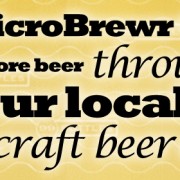MicroBrewr 084: A healthy alcoholic beverage: hard cider
Podcast: Play in new window | Download | Embed
Subscribe: RSS
As soon as Mark McTavish could acknowledge alcohol, he gravitated toward hard cider. Later, he attended beverage management school and opened a craft beer bar in Toronto, Canada. Now in the U.S., Mark owns a cider distribution company and 101 Cider House in Los Angeles, California.
“As a cider maker, you’re not really making anything. You’re more of a custodian to the beverage.” [Tweet This]
Mark had a long career in the fitness business, selling exercise equipment and helping gyms get started. He is very health conscious and this comes through in his hard cider.
101 Cider House focuses on a “healthy” alcoholic beverage. All of 101 Cider products are: raw, living, and probiotic.
Some attributes of what Mark calls a healthy hard cider:
- Wild fermented
- A living beverage, don’t kill the juice in the process
- Not filtered
- No added sulfites
The hard cider market is absolutely exploding, with 500% growth in the last 3 years. Besides the general growth, Mark is tapping the health foods sector.
“From step one,” reflects Mark, “I always wanted to make a healthy alcohol.”
“Here in Los Angeles,” he says, “people are very interested in their health foods. When it comes to alcohol, a lot of people tend to check their standards at the door.”
“We have to show our ingredients in our cider,” Mark says of the labels on the bottles. “Our biggest marketing tool is to show people that we are using 100% raw fruit and doing the natural process like we do.”
They don’t add any unnecessary or unexpected ingredients to the cider, not even yeast.
“Cider is like wine,” he says. “You can press the fruit naturally, let juices sit their and do its own thing with its indigenous yeasts, and it will tell you what it’s going to do with itself.
“And if you wait long enough, it will make something great.”
Brewery specs:
Kettle size: n/a.
Size and quantity of fermentation tanks: 8, 2000-gal (64-BBL) poly tanks; 6, 275-gal (9-BBL) poly tanks; 50, 55-gal (1.75-BBL) oak barrels.
Size and quantity of bright tanks: 0. Not required as we bottle-condition and keg-condition all product.
Annual brewing capacity/last year’s production: 50,000-gal capacity.
Square footage: 7000 sq. ft.
Years in operation: 10 months years (opened December 2014).
Listener question:
From Rob Lightner: Has your brewery turned out the way you thought it would? And if not, how is it different?
Can’t-go-without tool:
Pump.
Book recommendation:
- The E-Myth : Why Most Small Businesses Don’t Work and What to Do About It by Michael E. Gerber.
Check out the entire list of recommended books, click here.
An upcoming beer style:
Hopped cider
Other resources:
- Half Pint Ciders, Westlake Village, California.
- Tilted Shed Ciderworks, Windsor, California.
- Devoto Orchards Cider, Sebastopol, California.
- AppleGarden Farm, Tomales, California.
- Hard Cider for Brewers by Marc Sorini and Bethany Hatef, The New Brewer, May/June 2014. (See “TTB & FDA labeling requirements for hard cider” on page 28)
- Why Your Supermarket Sells Only 5 Kinds of Apples by Rowan Jacobsen, Mother Jones, March/April 2013.
You can reach Mark McTavish and 101 Cider House at:
Sponsors:
“Fast, reliable, affordable, web hosting.”
Support MicroBrewr
Help keep MicroBrewr on the air. CLICK HERE for ways you can help.















I attended a cider tasting hosted by Marc and was very impressed with his knowledge, as well as his ciders. With people getting interested in probiotic foods he is well-positioned to take advantage of that.
Yes Noelle, Mark is pretty excited about the probiotics. I find the raw aspect of cider pretty interesting.